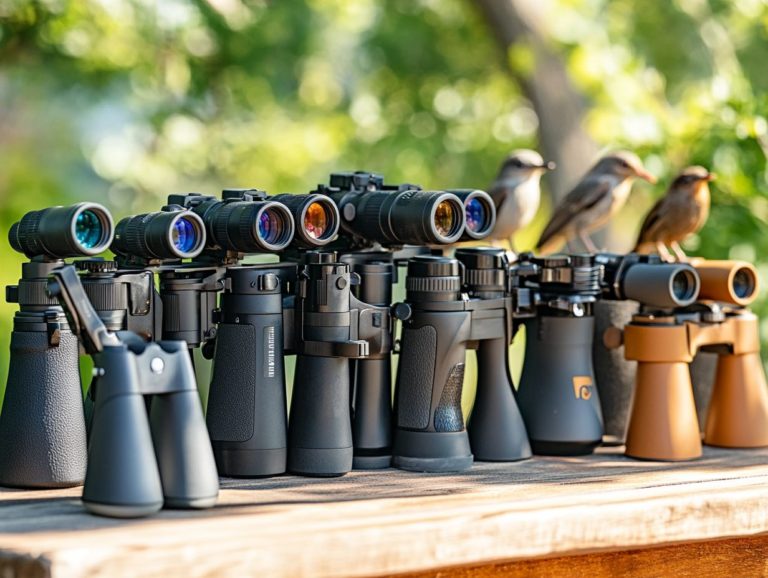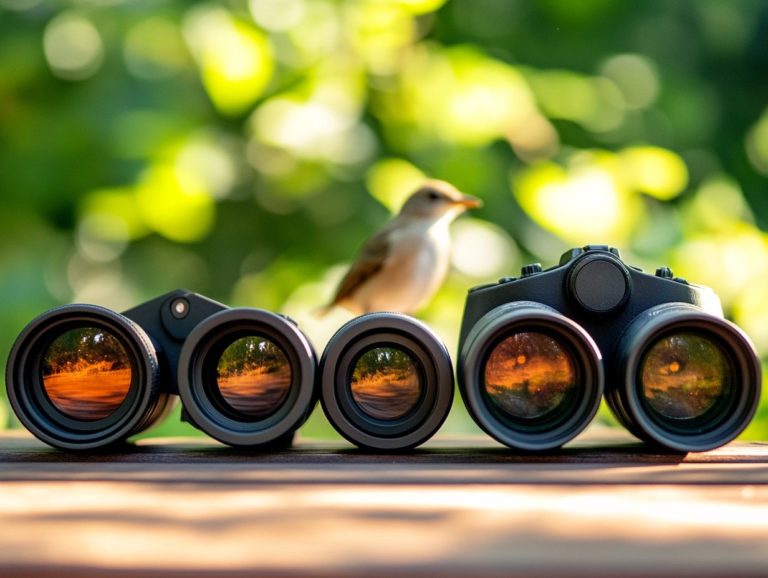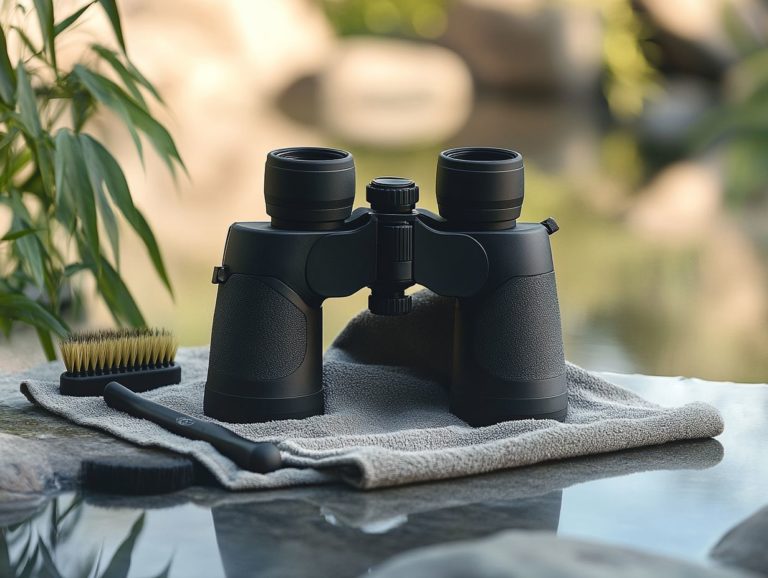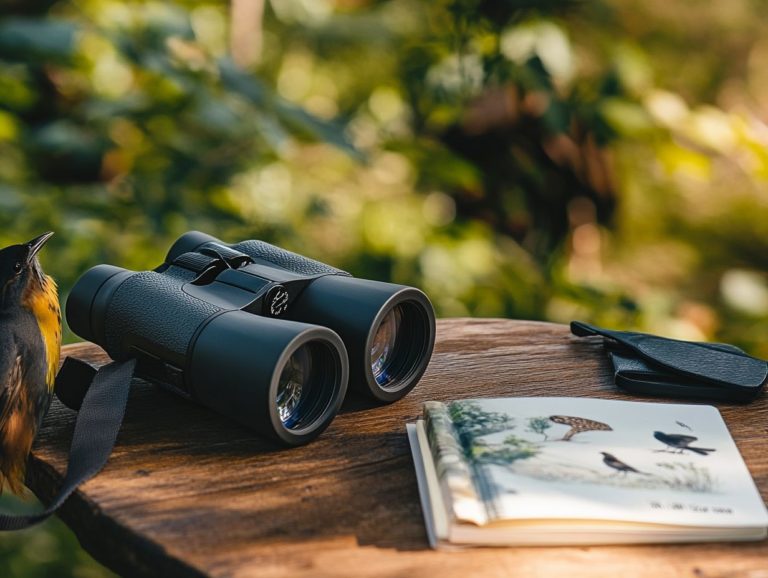The Evolution of Binocular Technology for Birders
Birdwatching is a captivating hobby that immerses you in the wonders of nature. Having the right tools can truly elevate your experience.
Binoculars are essential for any birder. They enhance your connection to distant feathered companions and bring them into vibrant focus.
This exploration delves into the evolution of binocular technology. You’ll discover the key features to consider when selecting the perfect pair, as well as techniques for optimal viewing that can transform your outings.
This also shows some exciting trends shaping the future of birding equipment.
Join us on this exciting journey to enhance your birdwatching adventures and deepen your appreciation for the avian world!
Contents
- Key Takeaways:
- The Importance of Binoculars for Birders
- The Evolution of Binocular Technology
- Key Features to Look for in Birding Binoculars
- How to Properly Use Binoculars for Birding
- Future Trends in Binocular Technology
- Frequently Asked Questions
- What is binocular technology for birders, and how has it changed over time?
- What were some of the earliest forms of binocular technology used by birders?
- How has the size and weight of binocular technology changed over the years?
- What are some of the most recent technological advancements in binoculars for birders?
- How has the evolution of binocular technology influenced the birding experience?
- What does the future hold for binocular technology for birders?
Key Takeaways:
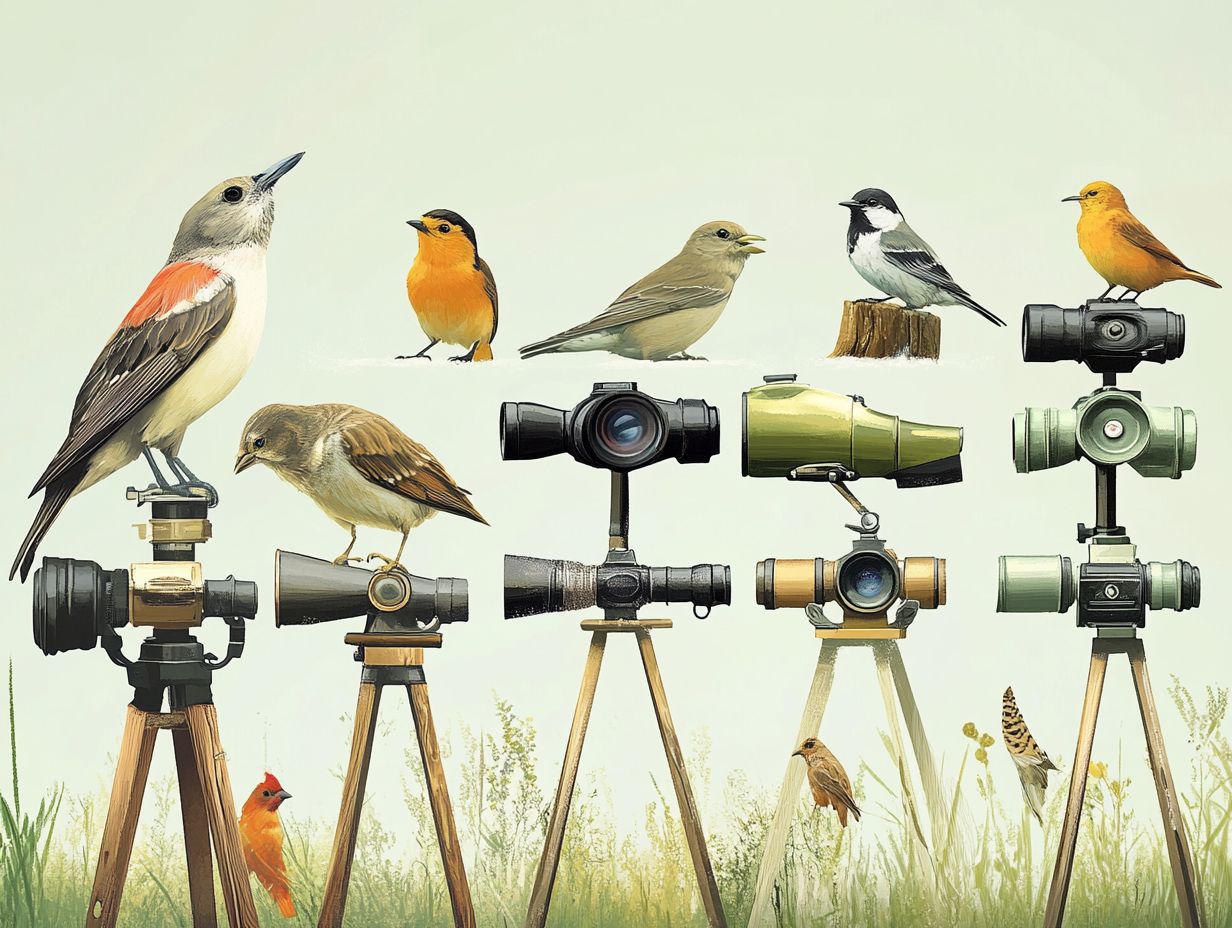
- Binoculars help birders see and identify birds from a distance.
- They have evolved from basic designs to advanced technology for better clarity and durability.
- When choosing binoculars, look for magnification, lens quality, and field of view.
The Importance of Binoculars for Birders
Binoculars are an essential companion for birders. They elevate your birdwatching experience by allowing you to observe a myriad of bird species in their natural habitats.
Selecting the right pair can markedly enhance clarity, allowing you to appreciate intricate details and behaviors of birds elements vital for both identification and conservation efforts.
The optical quality and performance of binoculars can differ significantly among brands like Zeiss, Nikon, and Swarovski. It’s crucial for you to choose wisely to ensure your birding adventures are nothing short of extraordinary.
Why Binoculars are Essential for Bird Watching
Binoculars are critical for your birdwatching adventures. They offer the magnification and clarity you need to spot distant birds in stunning detail, turning an ordinary outing into an immersive experience.
The significance of light transmission cannot be overstated. Premium optics ensure that colors pop and details remain crisp, making species identification a breeze. With close focus capabilities, you can observe birds in their natural habitat and catch those subtle behaviors that might otherwise slip past unnoticed.
A wide field of view enhances your ability to track active birds in flight, elevating your overall enjoyment. Comfort is key, and an ergonomic design minimizes strain on your hands and eyes during lengthy observation sessions, ensuring that your experience remains pleasant.
Together, these features create the perfect tool for capturing nature’s fleeting moments.
The Evolution of Binocular Technology
The evolution of binocular technology has been nothing short of extraordinary. It has moved from rudimentary designs to sophisticated models that elevate the birding experience for enthusiasts worldwide, reflecting the evolution of birding technology.
Initially, binoculars relied on porro prism designs, delivering a wider field of view. In contrast, today s advanced models often incorporate roof prism technology, offering a compact and lightweight option that is perfect for outdoor adventures.
Innovations in lens coatings and design have significantly enhanced light transmission. This enables birders like you to appreciate sharper images, even in challenging low-light conditions.
From Early Designs to Modern Innovations

The journey from those early binocular designs to today’s cutting-edge innovations showcases remarkable advancements in optics. These advancements are highlighted in the top 5 innovative binoculars for bird watching, significantly elevating your birding experience and allowing you to appreciate nature like never before.
These innovations, such as improved lens coatings, lightweight materials, and sophisticated focusing mechanisms, have transformed how you engage with wildlife. Enhanced optical clarity and brightness mean you can enjoy a more vivid view of distant bird species, making each outing even more gratifying.
With the advent of waterproof and fog-proof models, you can confidently explore diverse environments without worrying about damaging your equipment. And let s not forget the importance of proper maintenance. Regularly cleaning the lenses and storing them in protective cases will ensure that these invaluable tools last for years, letting you continue to revel in the wonders of nature without interruption.
Key Features to Look for in Birding Binoculars
When selecting binoculars for birding, it’s essential to focus on key features like power, how much closer the binoculars make things appear, and objective lenses. These elements significantly impact your optical experience and usability as a birdwatcher.
Factors to Consider When Choosing Binoculars
When you re in the market for binoculars, several key factors are vital for a comfortable and efficient birding experience weight, ergonomic design, and necessary adjustments.
Aim for a lightweight option that won t leave your hands feeling like lead during extended use, and make sure it fits snugly with controls that are easy to reach. Look for rubberized grips and adjustable eyecups, as these will enhance usability and provide a secure hold, even in damp conditions. Don t overlook weatherproofing; this feature is crucial for withstanding harsh environments and ensuring your binoculars can brave rain, fog, or dust.
Collectively, these features will elevate your viewing experience, making your outdoor adventures even more enjoyable and effective.
How to Properly Use Binoculars for Birding
Using binoculars effectively for birdwatching is crucial for enhancing your visual experience. This skill enables you to quickly identify different bird species while ensuring comfort and ease of use throughout your time in nature.
Techniques for Optimal Viewing and Identification
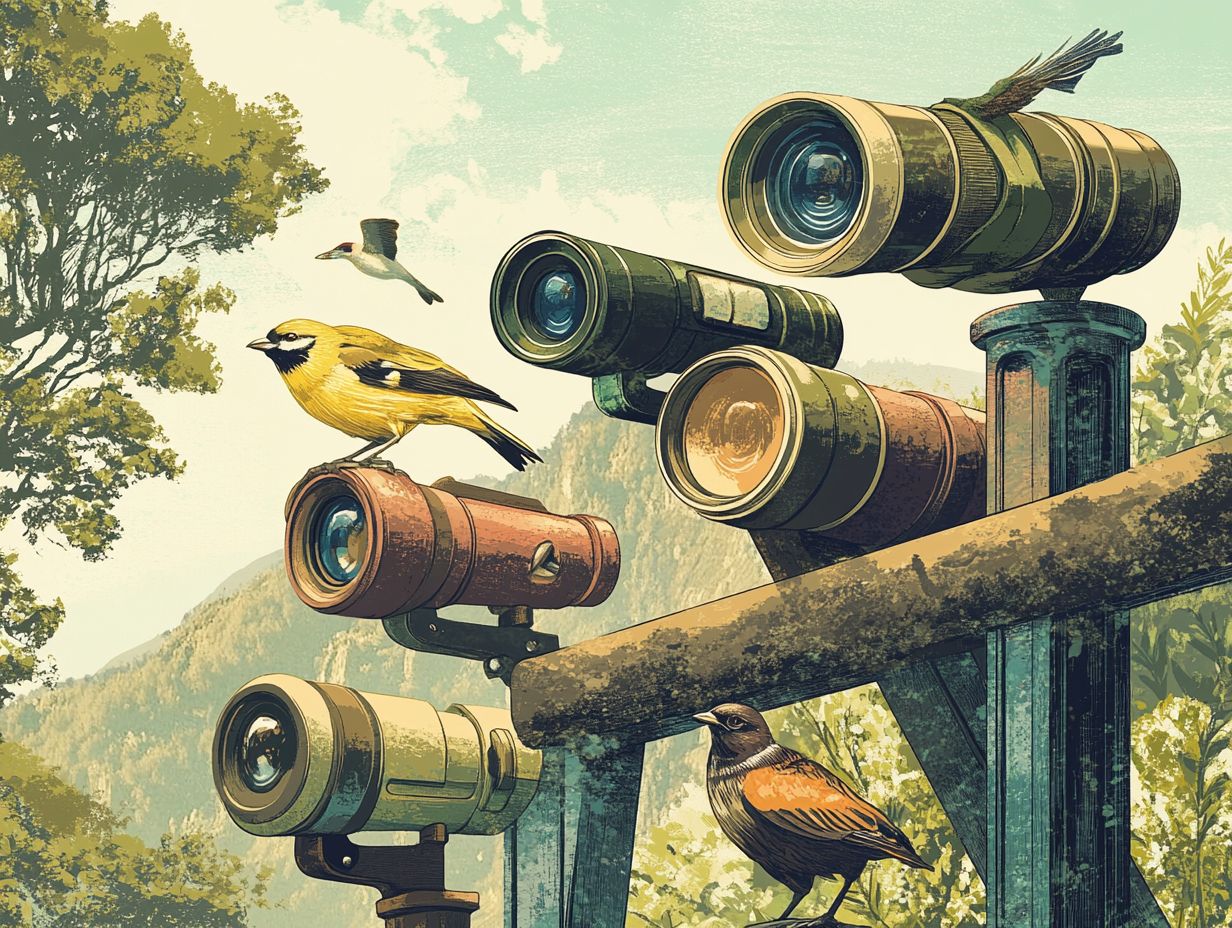
To achieve optimal viewing and identification of birds, you should employ specific techniques, such as adjusting the focus and ensuring that your binoculars’ field of view meets your needs.
By fine-tuning the close focus settings, you can observe intricate details like feather patterns, which will significantly enhance your identification skills. Understanding how to maximize the field of view allows for easier tracking of moving birds, transforming your experience into something truly enjoyable rather than frustrating.
It’s essential to spend some time practicing these adjustments before heading out; knowing your binoculars well improves both your comfort and efficiency during observation. Engaging in regular practice sessions will enable you to respond swiftly to new sightings, deepening your appreciation of the fascinating world of avian life.
Future Trends in Binocular Technology
The future of binocular technology is on the brink of remarkable advancements, with digital birding features, smartphone integration, and enhanced optical performance set to elevate your birding experience to unprecedented levels. Understanding the role of binoculars in bird conservation can also enhance your appreciation for these innovations.
Get ready to immerse yourself in a world where every detail comes into sharp focus, transforming your connection with nature into something truly extraordinary.
Don’t miss out on the opportunity to enhance your birdwatching experience. Get your binoculars today!
Predictions for Advancements in Birding Equipment
Predictions for advancements in birding equipment indicate that you can expect a delightful trend toward integration with smartphones and binocular comparisons. These innovations could transform how you engage with nature.
Birding may soon feature binoculars with augmented reality overlays. Imagine identifying bird species instantly via your smartphone!
Lightweight, high-powered binoculars will expand traditional gear’s possibilities. You’ll capture distant moments with stunning clarity.
These exciting developments will transform how you experience birding! They promise to enhance your observation experience and deepen your appreciation of avian life, beautifully bridging the gap between nature and technology.
Frequently Asked Questions
What is binocular technology for birders, and how has it changed over time?
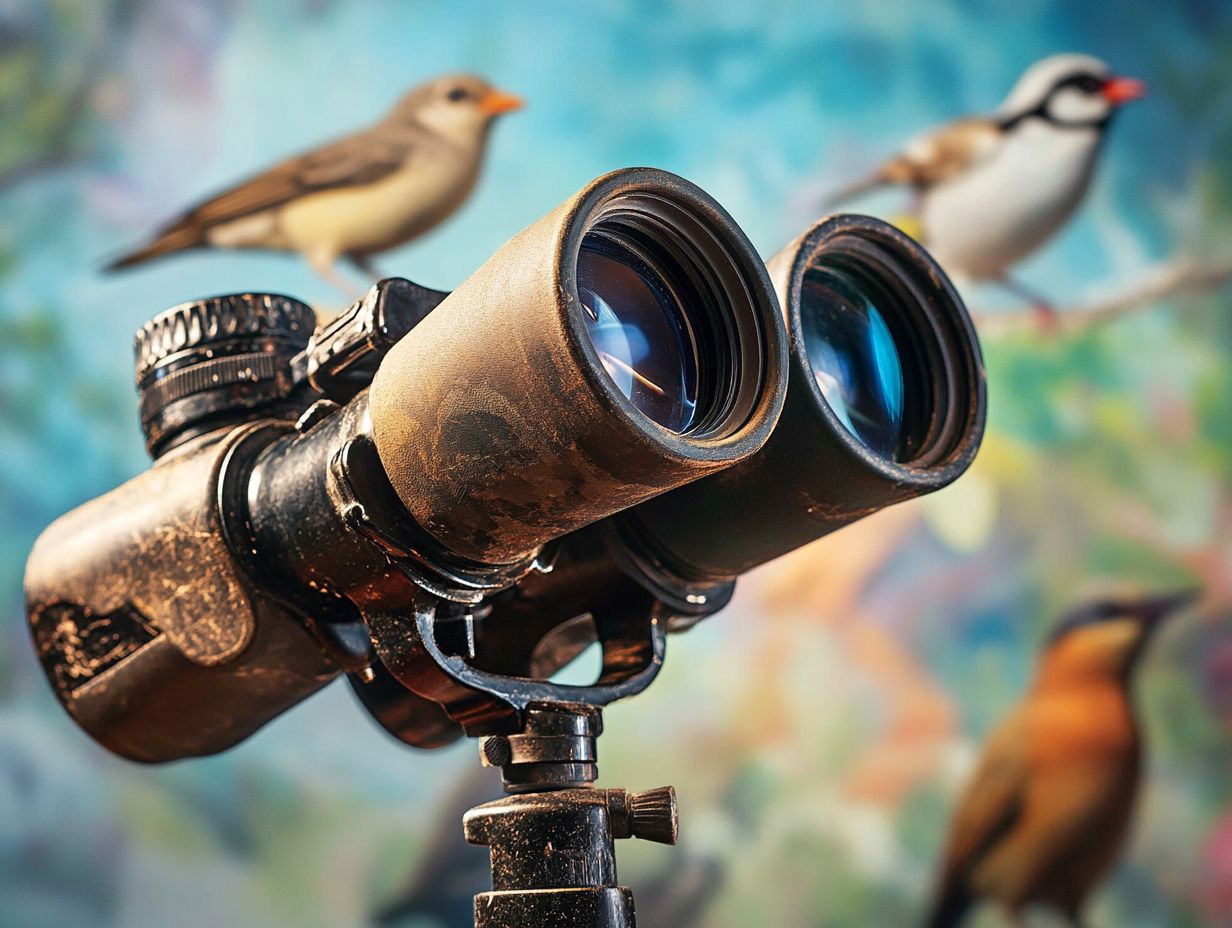
Binocular technology for birders is the equipment used to view and identify birds in their natural habitat. It has evolved from basic handheld binoculars to advanced digital devices that can record and analyze bird sightings, making it essential to understand binocular specifications for birders.
What were some of the earliest forms of binocular technology used by birders?
The earliest forms of binocular technology were simple handheld binoculars with low magnification and fixed focus. These were often bulky and heavy, making them difficult to carry on birding trips.
How has the size and weight of binocular technology changed over the years?
Thanks to advancements in materials and design, binocular technology has become much smaller and lighter. This has greatly improved portability and ease of use for birders, highlighting the role of ergonomics in birding binoculars.
What are some of the most recent technological advancements in binoculars for birders?
Recent technological advancements include image stabilization, improved lens coatings for better clarity and color accuracy, and digital features such as built-in cameras and GPS tracking.
How has the evolution of binocular technology influenced the birding experience?
The evolution of binocular technology has greatly enhanced the birding experience. Now, birders can quickly and accurately identify birds, thanks to understanding the importance of binoculars in birding, and record their sightings in detail.
What does the future hold for binocular technology for birders?
The future of binocular technology looks exciting, with potential features like augmented reality displays and real-time bird identification. The possibilities are endless!
Are you ready to explore the future of birding technology with us? Stay updated and share your birding experiences!

